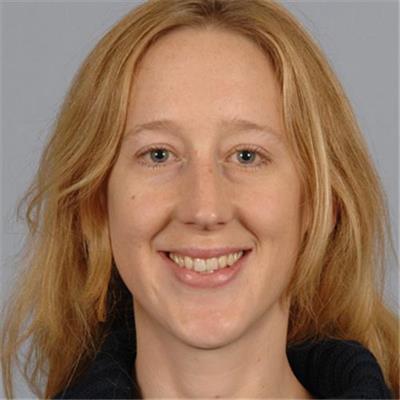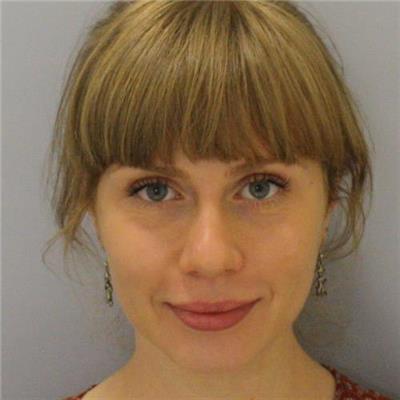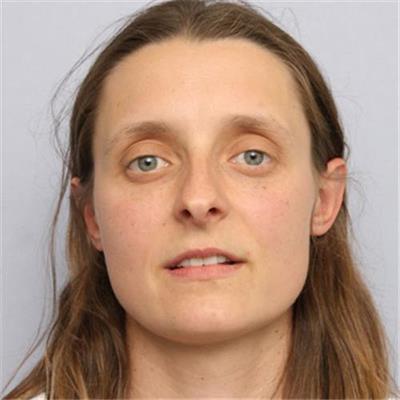Reproductive Development
Differences of sexual development (DSDs) are surprisingly common and often result in genital abnormalities, gender misassignment, infertility and psychological trauma.
The Reproductive Development group aims to pool its expertise in human genetics, molecular and developmental biology, to find genes important for sex development, identify gene defects that cause Differences of sexual development (DSD), and study their function.
Our team will liaise with clinicians to apply these findings to the accurate diagnosis and medical care of DSD in children.
Group Leaders


Team Leaders

Group Members







Our projects
Disorders of Sex Development: Genetics, Diagnosis, Informing Clinical Care
The cause of Disorders of Sexual Development (DSDs) is often the breakdown of the complex network of gene regulation and expression which is essential for the proper development of testes or ovaries in the embryo.
DSDs present a major paediatric concern because they are difficult to diagnose and are associated with complications including gonad cancer and infertility.
Since the discovery of the sex-determining region Y gene (SRY) in 1990, there have been considerable advances in understanding the genetic factors involved in gonad differentiation. It has been estimated that a molecular diagnosis is made in only about 20 per cent of DSD cases.
Our lab is using Massively Parallel Sequencing (MPS, or Next Generation Sequencing) technologies for the identification of potential novel DSD candidate genes in order to increase the number of patients who can be given an accurate molecular diagnosis.
Identification and analysis of regulatory regions associated with Disorders of Sexual Development (DSD)
While mutations in several key genes have been identified, the majority of DSD cases still cannot be explained. Preliminary studies undertaken by the group on DSD patients suggest that disruption of the regulatory regions of known and potentially novel genes may explain a significant proportion of DSD cases. Mutations or deletions/duplication of regulatory regions may result in over- or under-expression of key gonad development genes, resulting in a dysfunctional gonad, and DSD.
The group is using state-of-the-art methods to identify the regulatory regions of genes involved in DSD and sex-specific enhancers genome-wide. The function of these regions is further analysed by a variety of different approaches. Regions confirmed in vitro are then used to generate transgenic mice to validate their functionality in vivo.
This research will increase our knowledge of DSD gene regulation, improve the diagnosis of these patients and assist in their clinical management.
Testis in a dish (growing a pair)
There is a significant gap in our understanding of human embryonic gonadal development, largely due to the impracticality of obtaining primary human embryonic gonad tissue and the absence of human embryonic gonadal cell lines. Functional validation of new genetic variants identified in DSD patients is often carried out in suboptimal animal or cell models, both of which fail to faithfully recapitulate the human embryonic gonadal environment. A human in vitro system comprising embryonic testis cell lineages is urgently required for the study of human gonadal development and the disruptive genetic changes that occur in DSDs.
The Reproductive Development team have recently developed an innovative protocol to differentiate human induced pluripotent stem cells (iPSCs) into early bi-potential gonad and testis-like cells. When aggregated, these cells form a complex tissue structure with hallmarks of a testis-organoid (Knarston, et al 2020 Stem Cell Reports under review). This innovation is a major step towards producing human embryonic testis organoids as a disease model for DSD.
Ovarian Development and Disease program
Premature ovarian insufficiency (POI) is a leading form of female infertility characterized by menstrual disturbance (absent or irregular periods) and a menopausal hormone profile before the age of 40 years. It affects more than one in 100 women before the age of 40, one in 1,000 women before the age of 30 and one in 10,000 girls/women before the age of 20. POI is not only associated with infertility but also with increased risk of other health conditions such as heart disease, bone disease, mental health disorders, diabetes and cancer. The risk of co-morbidity is partly determined by the underlying genetic cause. POI can be caused by variants in over 80 different genes, but most cases have no known cause indicating a need for further research.
The Ovarian Development and Disease program focuses on identifying the genetic cause of POI and using functional disease modelling to establish variant causation and to gain new insights into disease mechanisms. Functional modelling includes in vitro experiments, fly models of ovarian disease, and the study of patient cells. With new gene discoveries and new insights into ovarian disease, diagnostic precision can be achieved leading to improved outcomes for affected girls and women.
Funding
Funding
- National Health and Medical Research Council
- University of Melbourne
- Mito Foundation
- Helen McPherson Smith Trust
- Australian Research Council
- Department of Innovation, Industry, Science and Research
- Australasian Paediatric Endocrine Group
- International Foundation for Ethical Research
Collaborations
National
- Victorian Clinical Genetics Services
- The Royal Children's Hospital
- The University of Melbourne
- Monash Children's Hospital
- Institute for Molecular Bioscience, The University of Queensland
- Walter & Eliza Hall Institute of Medical Research
- Hudson Institute for Medical Research
- Monash University
- The Children's Hospital at Westmead
- Sydney Children's Hospital
- UNSW
- The University of Sydney
- Royal Prince Alfred Hospital
- John Hunter Children's Hospital
- Lady Cilento Children's Hospital
- Centenary Hospital for Women and Children
- Princess Margaret Hospital
- University of Western Australia
- King Edward Memorial Hospital
- SA Clinical Genetics Service
- University of Adelaide
- South Australian Health and Medical Research Institute
International
- National Children's Hospital, Hanoi, Vietnam
- Tokyo Bay Medical Centre, Tokyo, Japan
- Department of Women's and Children's Health, University of Otago, Dunedin, New Zealand
- Auckland District Health Board, Auckland, New Zealand
- Christchurch Hospital, Christchurch, New Zealand
- Liggins Institute, University of Auckland, Auckland, New Zealand
- Starship Paediatric, Auckland, New Zealand
- Canterbury Health Laboratories, Christchurch, New Zealand
- University of Florence, Italy
- University of Groningen, , Netherlands
- Erasmus University Medical Centre, Rotterdam, Netherlands
- St Anna Children's Hospital, Vienna, Austria
- Medical University of Vienna, Vienna, Austria
- Ghent University Hospital, Ghent, Belgium
- Diagnostic Services of Manitoba and Genetics & Metabolism Program, WRHA, Winnipeg, MB, Canada
- University of Manitoba, Winnipeg, MB, Canada
- Diponegoro University (FMDU), Semarang, Indonesia
- Hirabai Cowasji Jehangir Medical Research Institute, Pune, India
- Sanjay Gandhi PGI, Lucknow, India
- National Institute of Child Health, Karachi, Pakistan
- Hue Central Hospital, Hue city, Vietnam
- Technion Israel Institute of Technology, Haifa Israel
- Bambino Gesù Children's Hospital, IRCCS, Rome, Italy
- Sorbonne Université, Hôpital Trousseau, Paris, France
- Imagine Institute Paris, France
- Tel aviv Sourasky Medical Center, Tel Aviv, Israel
- Hebrew University Hadassah Medical School, Rehovot, Israel
- Edmond and Lily Safra Children's Hospital, Chaim Sheba Medical Center, Ramat Gan, Israel
- Sackler School of Medicine, Tel Aviv University, Tel Aviv, Israel
- Copenhagen University Hospital (Rigshospitalet), Copenhagen, Denmark
- The Peter MacCallum Cancer Centre, Melbourne, Australia
- Marseille Univ. APHM. Department of Neuroradiology, Timone Hospital. Marseille France
- Sheba Medical Centre, Tel Aviv, Israel
- University of Gabes, Tunisia
- Sfax University, Tunisia
- Charles Nicolle Hospital Tunis Tunisia
- Institut Pasteur, Paris, France
- The Rina Mor Genetic Institute, Wolfson Medical Center, Holon 58100, Israel
- Dana Dwek Children's Hospital, Tel Aviv Medical, Center, Tel Aviv, Israel
Publications
Eggers S, Sadedin S, van den Bergen J, Robevska G. et al (71 authors) and Sinclair A. (2016) Disorders of sex development: Insights from targeted gene sequencing of a large international patient cohort. Genome Biology 17:243-264.
Croft, B, Ohnesorg,T, Hewitt, J, Bowles, J, Quinn, A, Tan, J, Corbin, V, Pelosi, E, van den Bergen, J, Sreenivasan, R, Knarston, I, Robevska, G, Vu, D, Hutson, J, Harley,V, Ayers, K, Koopman, P, Sinclair, A. (2018) Human sex reversal is caused by duplication or deletion of core enhancers upstream of SOX9. Nature Communications 5139 (9).
Ayers, K. L.+, Kumar, R., Robevska, G., Bruell, S., Bell, K., Malik, M. A., Bathgate, R. A., and Sinclair, AH. (2019). Familial bilateral cryptorchidism is caused by recessive variants in RXFP2. Journal of Medical Genetics 56:727-733.
Knarston IM, Pachernegg S, Robevska G, Ghobrial I, Xuan Er P, Georges E, Takasato M, Combes AN, Jørgensen A, Little MH, Sinclair AH*, Ayers KL* (2020) An In Vitro Differentiation Protocol for Human Embryonic Bipotential Gonad and Testis Cell Development, Stem Cell Reports,15(6), 1377-1391. *co-senior authors
Robevska G, van den Bergen JA, Ohnesorg T, Eggers S, Hanna C, Hersmus R, Thompson EM, Bexendale A, Verge CF, Laferty AR, Marzuki N, Santosa A, Riedle S, Warne G, Looijenga L, Faradz S, Ayers KL, Sinclair AH. (2017) Functional characterisation of novel NR5A1 variants reveals multiple complex roles in Disorders of Sex Development. Human Mutation 39(1)124-139.
Tucker EJ, Grover SR, Bachelot A, Touraine P, Sinclair AH (2016) Premature Ovarian Insufficiency: New perspectives on genetic cause and phenotypic spectrum. Endocrine Reviews 37(6): 609-635.
Tucker, EJ., Grover, SR., Robevska, G., van den Bergen, J., Hanna C. and Sinclair AH (2018) Identification of pathogenic variants in pleiotropic genes causing “isolated” premature ovarian insufficiency: implications for medical practice. European Journal of Human Genetics, 26 (9) 1319–1328.
Tucker EJ, Jaillard S, Grover SR, van den Bergen J, Robevska G, Bell KM, Sadedin S, Hanna C, Dulon J, Touraine P, Sinclair AH. (2019) TP63-truncating variants cause isolated premature ovarian insufficiency. Human Mutation 40(7):886-892
Tucker EJ, Rius R, Jaillard S, Bell K, Lamont P, Travessa A, Dupont J, Sampaio L, Dulon J, Vuillaumier Barrot S, Whalen S, Isapof A, Robevska G, van den Bergen J, Hanna C, Simpson A, Ayers K, Thorburn DR, Christodoulou J, Touraine P, Sinclair AH (2020) Genomic sequencing highlights the diverse molecular causes of Perrault syndrome: a peroxisomal disorder (PEX6), metabolic disorders (CLPP, GGPS1) and mtDNA maintenance/translation disorders (LARS2, TFAM) Human Genetics 139(10):1325-1343.
Smith, C.A. Roeszler, K. Ohnesorg, T. Farlie, P. and Sinclair, A.H. (2009) The conserved avian Z-linked gene, DMRT1, is required for male sex determination in the chicken. Nature 461:267-271
Smith, C.A., McClive, P., Western, P.S., Reed, K. and Sinclair, A.H. (1999) Evolution - Conservation of a sex-determining gene. Nature 402:601-602
Foster, J.W., Brennan, F., Hampikian, G., Goodfellow, P.N., Sinclair, A.H., Lovell-Badge, R., Selwood, L., Renfree, M.B., Cooper, D.W., and Graves, J.A.M. (1992) Evolution of sex determination and the Y chromosome: SRY- related sequences in marsupials. Nature 359:531-533
Berta, P., Hawkins, J.R., Sinclair, A.H., Taylor, A., Griffiths, B.L., Goodfellow, P.N. and Fellous, M. (1990) Genetic evidence equating SRY and the male testis-determining factor. Nature 348:448-450
Sinclair, A.H., Berta, P., Palmer, M.S., Hawkins, R., Griffiths, B.L., Smith, M., Foster, J.W., Frischauf, A-M., Lovell-Badge, R. and Goodfellow, P.N. (1990) A gene from the human sex-determining region encodes a protein with homology to a conserved DNA-binding motif. Nature 346:240-245
Palmer, M.S., Sinclair, A.H., Berta, P., Ellis, N.A., Goodfellow, P.N., Abbas, N.E. and Fellous, M. (1989) Genetic evidence that ZFY is not the testis-determining factor. Nature 342:937-939
Sinclair, A.H., Foster, J.W., Spencer, J.A., Page, D.C., Palmer, M., Goodfellow, P.N. and Graves, J.A.M. (1988) Sequences homologous to ZFY, a candidate human sex-determining gene, are autosomal in marsupials. Nature 336:780-783
